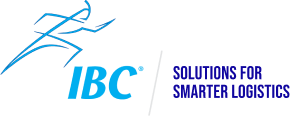As of July 1, 2021, new regulations for trading within the European Union (EU) wil go into effect. This will impact e-commerce businesses importing and exporting goods in the EU, as well as those selling products cross-border.
All businesses must comply with these changes, as there’s a zero tolerance policy. Part of that involves how your business collects and pays VAT. Failure to comply results in broader implications for the way you conduct business in the EU.
For an overview on how sellers can best prepare for these changes, along with answers to all of your questions, continue reading below.
What are the new trade regulations?
Under the new trade regulations, all B2C distance sales of goods will be subject to VAT in the country where the merchandise is received (destination country).
If the non-EU seller is collecting VAT at check-out (DDP), the seller is required to charge, collect and pay local VAT on that particular transaction. The current threshold of 22 EUR will be abolished, making low-value goods exempt from VAT.
For any DDU sales using the postal service, the final recipient will be charged local VAT on that particular transaction due to the abolishment of the 22 EUR threshold.
What is the IOSS?
As a result of this new ruling, the seller is required to register for VAT in the country where the goods are shipped (destination country). However, for certain types of goods imported from a non-EU country, a special scheme, also known as the IOSS (Import One Stop Shop), becomes available.
To qualify for the IOSS, the following characteristics need to apply to a shipper’s transaction:
- The transaction needs to be a B2C sale(s).
- The shipment needs to be considered low value (below 150 EUR).
- The transaction should be considered a direct delivery to the consumer.
There are different scenarios in place for electronic platforms in the case of direct deliveries from non-EU countries. If the consignment exceeds the 150 EUR, it is not considered low value and the normal VAT ruling becomes effective for direct sales and delivery from non-EU countries.
So, what does this mean for shippers?
In summary, if a shipper chooses to charge and collect VAT at checkout, and the transaction qualifies for the IOSS scheme, a VAT registration in every single country serviced becomes unnecessary.
With the help of the IOSS scheme, the non-EU seller can obtain an EU VAT registration for every single EU country, while reporting the VAT due at sales via an appointed intermediary.
A non-EU-seller needs to appoint an intermediary if they want to use the IOSS scheme.
It is the responsibility of the shipper to comply with these new requirements. For more information about taxation, click here.
How can IBC help EU shippers?
With a global distribution network, we can help you continue to reach shoppers across the world. To ensure compliance with changes to the VAT rules, contact us today.
Subscribe for the latest updates
Subscribe Here!
By submitting this you will be receiving our latest updates on post.
- Recent
- Popular

Comments
Comment Form